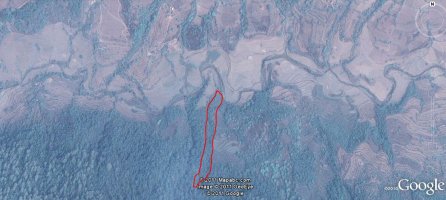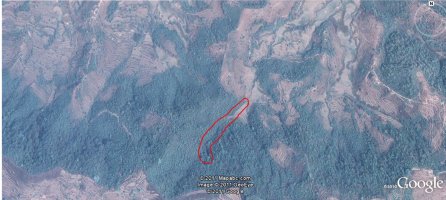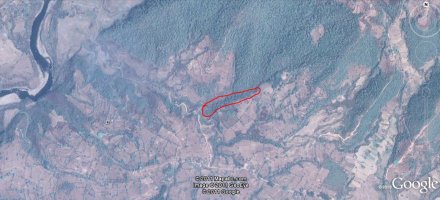IUCN/SSC Otter Specialist Group Bulletin

|
©IUCN/SCC Otter Specialist Group Volume 28 Issue 1 Pages 1- 60 (January 2011) Citation: Kafle, G. (2011) Country Update: Nepal. IUCN Otter Spec. Group Bull. 28 (1): 46 - 49 Gandhiv Kafle1 1 Nepal Representative, IUCN/OSG. Email: gkafle@scientist.com |
 |
The major annual update/findings of the Nepal Otter Research and Conservation Initiative in Nepal are presented.
Identification of otter presence sites
- Kaski district: Eurasian otters have been confirmed in Rupa Lake and Bijaypur stream of Pokhara valley. Begnas Lake is a potential site that needs further investigation. It is possible that there are no otters at Phewa Lake as no signs of otters were found in the current survey.
- Gorkha district: In Pyaudikhola watershed of Chyangling hills of Gorkha district, Aarukharka stream - a streamlet to Pyaudi stream and Pandel stream - a streamlet heading to Kamaltar Bazaar could possibly be used by Eurasian otters (Fig. 1,2). In Kapringkhola watershed of Gaikhur hills of Gorkha district, Kapring streamside joining the Marsyangdi stream nearby Dhikure Bagaar and inlet of Kapring stream near Tiwaritaar village amidst the Thulapakha community forest could possibly be used by Eurasian otters (Fig. 3,4). The Trishuli River along the Thumka and Hiklung village range holds some potential for otter occurrence
 |
|
Figure 1.
Aarukharka stream, Chyangling VDC of Gorkha district (click for larger version) |
 |
| Figure 2.
Pandel stream, Chyangling VDC of Gorkha district (click for larger version) |
 |
| Figure 3.
Kapring stream section joining Marsyangdi river, Gaikhur VDC of Gorkha district (click for larger version) |
 |
| Figure 4.
Tiwaritar stream joining Kapring stream, Gaikhur VDC of Gorkha district (click for larger version) |
- Lamjung district: Chepe stream along Alkatar village and Chepeghat range in Lamjung district could possibly be used by Eurasian otter ors.
- Kavre and Sindhupalchowk districts: Dharke stream and Indrawati stream bordering Kavre and Sindhupalchowk districts holds potential for the occurence of Asian Small-clawed otter and Smooth-coated otter. Patene stream, Roshi stream, Nanimata stream and Punyamata stream holds potential forthe presence of three types of otter.
Threats to otters
The little known population of otters and other aquatic animals are affected by a number of adverse factors in freshwater resources.
Intentional killing of otters was reported in Rupa Lake due to predation of fish by otters.
The drying up of water sources, in the context of a changing climate, has affected fish population and their migration due to lowering water level and availability, subsequently affecting otter habitat and diet. Change of vegetation along stream banks was reported. This has contributed to habitat alteration and succession affecting survival of frog, snails and other small amphibians.
Extraction of rocks and sand from the stream and rivers is prevalent in wetlands of Kaski, Kavre and Sindhupalchowk districts.
Fishing with use of electricity and poison is prevalent in streams and rivers of Kavre and Sindhupalchowk districts. The leakage of chemicals and nutrients from the farming lands to water bodies has contributed to water pollution and eutrophication in the water bodies, affecting otter habitat and dietary diversity.
One of the major social factors hindering otter research and conservation in Nepal is the low, or in many cases complete lack of awareness in the general population of the existence of otters. Oder people and those engaging in wetlands for subsistence are somewhat familiar with otters but younger individuals are completely ignorant of the existence of otters. It makes the project team difficult to find right volunteers to help in surveying in the communities.
Some older people mistakenly confused marten and mongoose with otters, as the external physical outline of these species are somewhat similar, and poor knowledge of these people of the morphological features of otters contributed to this.
Future direction
It is probably too early to initiate intensive detailed studies of otters in Nepal. The current need is to conduct rapid assessment through participatory means of the potential wetland sites in which otters are found. This information is not available for many districts. Once this information is available, intensive surveys for example using camera traps or spraint analysis to evaluate the distribution and population status of otters in the wetlands with otter populations should be conducted. Knowledge of importance of otters and their conservation should be transferred to local people using participatory outreach tools simultaneously with ongoing research. This will help to allocate scarce resources for use in research in potential otter habitats.
Acknowledgements - Part of this update was published in River Otter Journal, 2010. XIX (II): 8-9. The support from Rufford Small Grants Foundation, Chester Zoo, Columbus Zoo, River Otter Alliance, and International Otter Survival Fund is highly acknowledged.